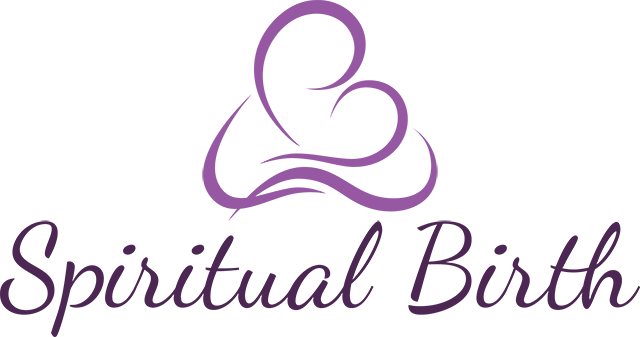 One of my colleagues and a student of psychology is conducting research on women who had caesarian sections, why and what they felt like afterwards. The outcomes of some of the interviews were interesting.
One of my colleagues and a student of psychology is conducting research on women who had caesarian sections, why and what they felt like afterwards. The outcomes of some of the interviews were interesting.
One of the women, lets call her Mary, had always wanted a caesarian section since she was a little girl and knew that it was the way she would have her baby one day. Despite the fact that she chose this mode of birth, nothing prepared her for the shock of the experience and the way she would feel afterwards. Firstly, while she had in her mind that a caesarian would save her from the terrible descriptions of labour pain she had heard about, she had no idea how nervous, scared and shocked she would feel while lying on the operating table with her head behind reims of green cloth and her body numb from the chest down. Not only was she cold, nauseous and shivering, she could also feel tugging and pulling in her abdominal area as the operation commenced. Her hands were strapped to arm rests on either side of her body and she felt like Jesus, crucified on the cross. Soon she heard a high pitched cry and the doctors commented that her baby was out and held him up for her to see above the height of the green cloth screen. Then he was taken away, while her husband joked with the doctors and followed the pediatrician to the examination of her newborn. Relief was great, the helplessness equivalent and Mary valiantly tried to touch and hold her baby when he was brought to her. After being stitched up and transferred to another bed and covered with blankets, she shivered uncontrollably and was wheeled to the recovery area while her son was taken to the nursery. An hour later, once Mary had been transferred to the ward, her son was brought to her to breastfeed. She couldn’t move, numb and still paralysed from the waist down, she struggled to find the right position so her baby could latch onto the breast.
The first 24 hours were a haze as drugs were given to quell the pain as sensation returned to her abdomen and everything ached. A pipe from her bladder emptied her urine into a bag, and it felt like the jaws of a crocodile were gnawing at her belly when she moved. Holding her baby was difficult and she was too woozy to pay attention to him and get to know him. The first six weeks were like trying to find water in the desert as Mary struggled with her recovering body, her sore nipples and breasts and a fretful, fussy baby. Her own needs for rest and recovery felt overwhelming, on top of this her baby’s needs to be carried, nursed and tended were exhausting.
Another woman, lets call her Sue, had hoped for a natural birth, yet was afraid of the pain of labour and birth. She did a little reading of the local ‘Baby’ magazines, and when her Obstetrician suggested that she have a caesarian section at 38 weeks of pregnancy she felt a wave of relief quell the rising anxiety about the forthcoming birth. They planned the date of the c/section together that day, and Sue felt a little dazed and somewhat removed from this birth process. She almost felt vaguely disconnected from her baby. While the operation was taking place, and with no prior preparation for the event, Sue began to feel as if she was living a bad dream, and her ideas of what she had expected morphed into shapes she didn’t recognise. Her memories of the experience deteriorate as she tells the story: she felt like a zombie for weeks, her body was sore and all those feelings of love she was supposed to feel for her baby did not come to her……It was a nightmarish first three months of being a mother and nothing and no-one prepared her for the feelings of utter dejection and depression of that time, and the sense that somehow it was supposed to have been different. Despite these feelings, she had not felt that the obstetrician or any friends or staff had tried to manipulate her choices, and that people had really tried their best to support and comfort her.
The impactof the caesarian section was unexpected and unanticipated by these two women. Could they have been better helped and better prepared perhaps?
Skin-to-skin contact of the newborn with his mother after birth, especially after a caesarian section, is vitally important. Babies recognise their mother’s smell , her touch and her voice after birth and skin-to-skin contact provides him with all of these stimuli. The sound of his mother’s heart beating when his ear is laid on her chest is familiar, the warmth of her body keeps him warm in theatre. Skin-to-skin contact stimulates the release of growth hormones in the baby, and oxytocin is released by both the mother and the baby inducing feelings of love, warmth, bonding and attachment.
Contrast these stories with the stories of women who experience ecstatic gentle births, hold their babies immediately after birth, breastfeed spontaneously and are able to deeply connect with their babies within an hour of giving birth. How does a woman get to experience and ecstatic birth and feel so connected to her newborn baby?
She does it by preparing for her birth, by asking the right questions and gathering the right kind of care-givers around her. She does it finding a doula, special midwife or doctor who will really listen and respect her. If she gets a feeling that they are phony, she will change her care-giver and find someone who listens. A woman prepares for an ecstatic birth experience by connecting with her unborn child – this can be done through guided meditations and visualizations with a facilitator until the skill is mastered and then continued daily. A woman eager to learn about natural methods of pain relief, the effects of her emotions on her baby, her labour and her birth or even her caesarian section will attend classes, workshops and seminars to find out more. She will arm herself with the knowledge and skills to enhance her process of birth and bonding and she will do all in her power not to be separated from her newborn. She will practice skin to skin contact with her baby after birth and surround herself with an army of helpers in her home and her neighbourhood. The kind of people who bring supper and take the dishes home, do the washing, give a shoulder when mom needs to cry, and hold the baby when mom needs a break!
It is these kinds of actions that will help us as a society to prevent the loss and despair in the newborn, described by John Bowlby so eloquently, and enable a mother to provide the right kind of interaction and closeness for her baby’s emotional and neurological development. It is out of such actions that mutual co-operation and loving partnerships will grow for our children.

1 thought on “How the Bowlby Attachment Theory applies to Pregnancy and Birth part 2”